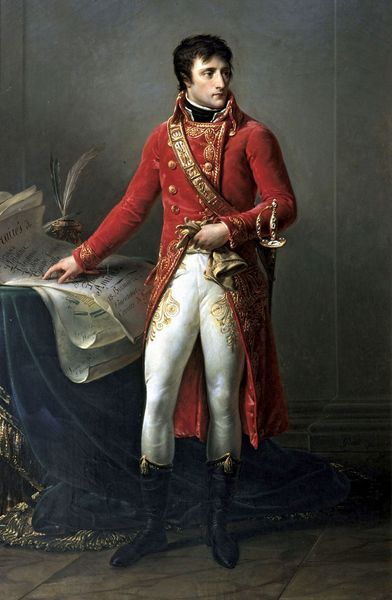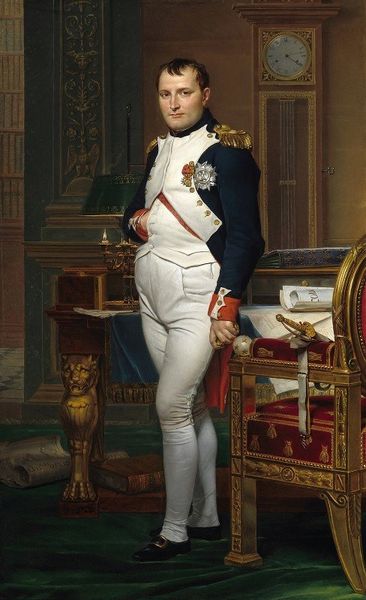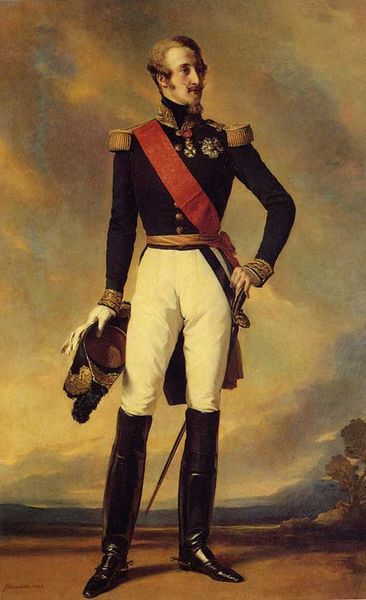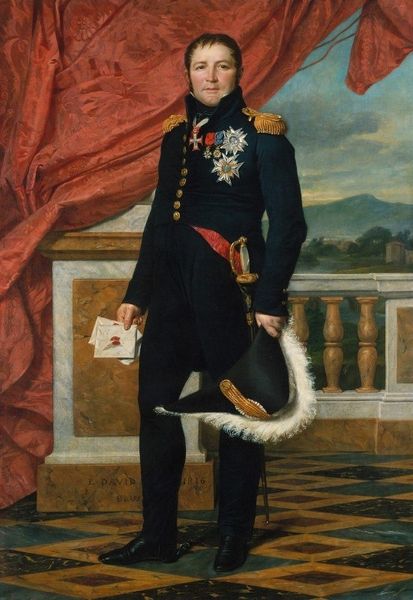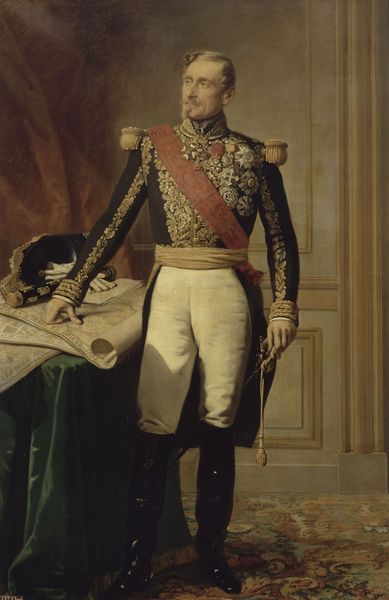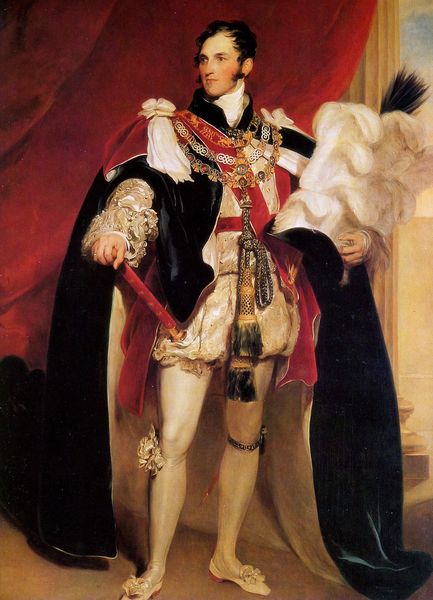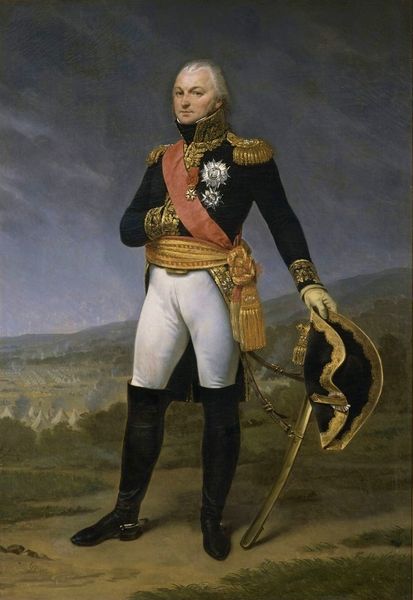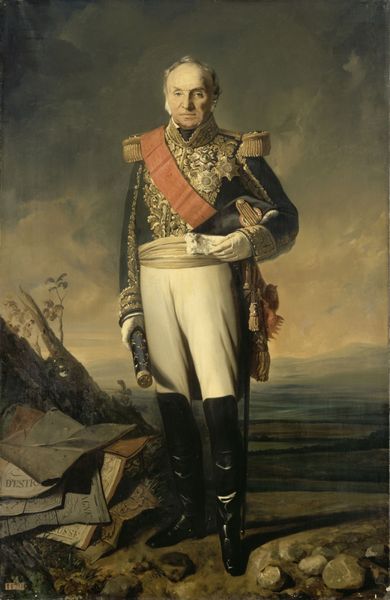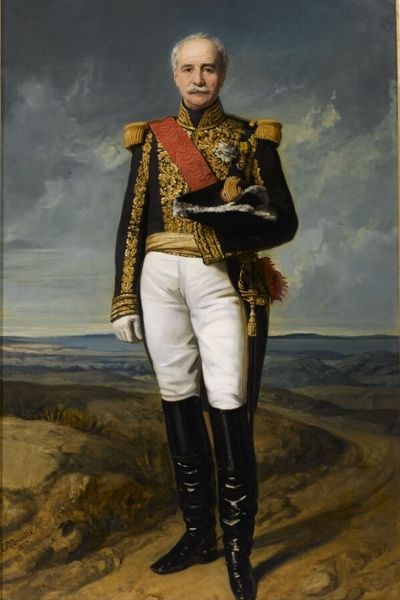
painting, oil-paint
#
portrait
#
painting
#
oil-paint
#
romanticism
#
history-painting
Copyright: Public domain
Curator: What an imposing figure! Franz Xaver Winterhalter painted this portrait of Leopold I of Belgium in 1846 using oil paint, a very common medium for portraits in that era. The piece falls into both the Romanticism and history-painting categories, reflecting a style meant to idealize the subject. Editor: I’m struck by the rigid formality—it feels so distant. His pose, the architecture in the background—it all speaks to control and a certain detachment from the everyday person. Almost cold, you might say. Curator: Detachment is perhaps inherent in the genre. We should consider the intense labor required in the production of the paints. The ultramarine blue, for instance, could have been derived from costly lapis lazuli, impacting the work's perceived value. But more generally, there's a calculated quality in his rendering of the royal persona for broad consumption. Editor: Exactly. What narrative is he trying to control? This portrait presents Leopold as a steadfast leader, but we need to contextualize that with the history of Belgium's formation and the socio-political landscape. Who was this image designed to impress, and what role did Leopold play in creating an independent Belgium versus inheriting the project of liberation? The medals plastered all over him create a feeling of almost performative authority. Curator: Those medals and epaulettes! They are meant to be imposing symbols of authority but also represent tangible resources –the metal itself, the craftsmanship—representing power through the mastery of materials. Editor: Power structures are further enforced by choices like his dress: tailored and opulent. The crisp white pants contrast dramatically against the darker coat and red sash. How does his presentation affect notions of class and access when presented to the public? And consider what the act of sitting for such a portrait implied about one's status. Curator: Right, the very materiality broadcasts the wealth supporting these political arrangements! Editor: Winterhalter has undeniably created an image of power, but one that benefits from and perhaps masks complex historical realities. Curator: Well, on balance, studying the materiality offers ways of engaging these larger structural realities; what feels so austere to you ends up yielding fruitful perspectives through understanding manufacture and artistic distribution!
Comments
No comments
Be the first to comment and join the conversation on the ultimate creative platform.
